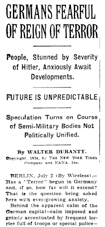
The phrase started showing up in speeches by politicians and related press coverage from Chicago to Los Angeles. But that usage caught on in 1922, after New York police commissioner Richard Enright, facing criticism of his leadership, mentioned it in a public relations effort. It was occasionally used for police, they write. According to lawyers James Clapp and Elizabeth Thornburg, who have dug up the history behind popular phrases, the idea migrated to other professions, with other colors, from a “thin white line of bishops” to a “thin blue line of public schoolboys in blazers.” The idea of a “thin blue line” can be traced all the way back to a 1854 British battle formation, a “thin red line” used during the Crimean War and then popularized in art, poetry and song. If you're looking at the community as a potential enemy, or a threat, that's certainly going to hinder any positive relationship.”īefore the flag came the phrase. Each should respect the role of the other.


“The police and community should work together, in order to produce safety. “It fosters this ‘us versus them’ mentality,” he said. White understands how the thin blue line flag has become a part of police culture, and that officers may view it as a sign of solidarity, but also worries about the message it sends to the public. Ambush killings of police have actually declined more than 90 percent since 1970, even with the recent spikes, according to a study by Michael White, a professor of criminology at Arizona State University. Police were not actually in greater danger than they had been before the Black Lives Matter movement. Meanwhile, Donald Trump, as a presidential candidate, called police “the force between civilization and total chaos.” Some states began passing laws to categorize physical attacks on law enforcement officers as hate crimes. “That’s maybe why it came to my eyes,” he said.Īs Jacob built the company, a “Blue Lives Matter” movement was growing in the wake of news stories of multiple officers shot to death in Baton Rouge, Louisiana Brooklyn, New York and Dallas. Jacob said the flag was not a direct reaction to the first Black Lives Matter protests-an idea suggested by a previous origin story in Harper’s-but he allows he may have first seen the thin blue line image after those protests spurred the circulation of pro-police imagery online. “It’s a flag to show support for law enforcement-no politics involved.” The company officially disavowed its use in Charlottesville.

“The flag has no association with racism, hatred, bigotry,” he said. Now, Jacob is the president of Thin Blue Line USA, one of the largest online retailers devoted exclusively to sales of pro-police flags, T-shirts, neckwear and jewelry. While in high school in West Bloomfield, Michigan, he had attended a memorial service for a police officer who had been killed on the job. He had seen the image of the flag on patches and stickers, he told The Marshall Project, but not an actual flag. In 2014, a white college student named Andrew Jacob was watching protests of police killings of Eric Garner, Michael Brown and Tamir Rice. Now, as police again become the focal point of a fight for racial equality in the U.S., the flag has returned to both mirror and amplify divisions.īut how did this flag come to be so pervasive? And what does it really stand for? County officials in Oregon recently paid $100,000 to a black employee of a law enforcement agency there, after she said she was harassed by coworkers for complaining about her colleagues displaying the flag at work. But it has also been flown by white supremacists, appearing next to Confederate flags at the 2017 ‘Unite the Right’ rally in Charlottesville, Virginia.
#ICYCLE ON THIN ICE AGE APPROPRIATE PROFESSIONAL#
Those who fly the flag have said it stands for solidarity and professional pride within a dangerous, difficult profession and a solemn tribute to fallen police officers.

Officers have worn versions of the flag on face masks while clashing with protesters in Baltimore and in Washington, D.C. When deputies hoisted the flag outside government buildings in Cincinnati, Ohio, and Orange, California, the sheriffs in both communities were sharply criticized. Recently, the flag was flown from the back of a car alongside protests in South Dakota, and burned outside the Utah State Capitol. As protests over policing continue to convulse cities throughout the U.S., one symbol keeps showing up: a black-and-white American flag with one blue stripe.


 0 kommentar(er)
0 kommentar(er)
